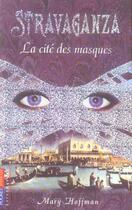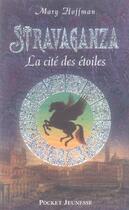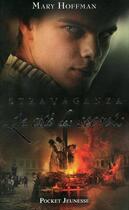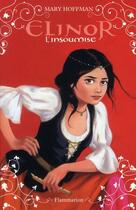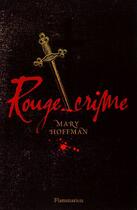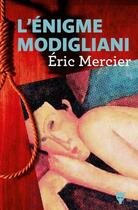City of masks is the first book of Stravaganza series and introduces us to Talia, a country similar to Italy situated in another world and another time. Everything starts in England, in the twenty-first century. Young Lucien suffers from cancer and cannot move from his bed. But when his father...
Voir plus
City of masks is the first book of Stravaganza series and introduces us to Talia, a country similar to Italy situated in another world and another time. Everything starts in England, in the twenty-first century. Young Lucien suffers from cancer and cannot move from his bed. But when his father gives him an Italian notebook, he travels to a strange sixteen’s century city, Bellezza, where he learns that he is a Stravagante, someone who can travel between England and Talia. In this world, he is as strong and healthy as he was before, but he will soon find out that it is a dangerous place, especially when the di Chimici try to acquire more power in order to dominate the city.
During the whole book, we follow Lucien, or Luciano in Talia, as he discovers a city very similar to Venice, as he will notice himself. The descriptions are nicely written and help us imagine this wonderful sixteenth-century setting. The story starts quietly, as Luciano meets young Arianna and they discover the city together. Once the basis of the story is set, more characters appear and the tension quickly builds up until the last pages of the book.
Every chapter is divided in various parts, each of them telling about one character and his actions or about the events occurring either in Talia or in our twenty-first century world. I liked Mary Hoffman’s narrative choice, because we can then compare the two dimensions and it enables us to know a lot more than the characters. Nevertheless, this does not mean there is no suspense; quite often, we witness actions that we can only understand later on in the book, and this strategy makes it very difficult not to read the whole story in one go.
We also get to know characters which are extremely important in the other books of the series, such as Rodolfo, the Chimici family, Professor Dethridge, Guido Parole, etc. Each of them is developed enough to make us like them (or hate them) but enough mystery is kept in order to keep the reader’s attention.
As the story goes on, we become aware of the author’s great knowledge of Italia. Although Talia is a fantasy world, its similarities to Italy are striking and everything is constructed according to reality. The cities mentioned all resemble a real one in Italy and we are at the same time drawn into another world and brought back to the past, but a different past, where silver is more precious than gold and science looks like magic.
We also learn about the Stravaganti and their history, how the first traveller arrived to Talia, what their role is and why they have to keep their brotherhood secret from the powerful Chimici family. A real history lesson! These details are cleverly mixed with the actions and we never actually notice how much information is included in the story. The end arrives far too quickly and is unexpected – a real good one!
City of masks is a really thrilling book and a promising start for the rest of the series, which I hope will have many more books published. We are introduced to important characters and presented central concepts about stravagation and Talia in general. The writing style is simple, alternating description of the wonderful setting with rapid actions, thrilling scenes with more romantic ones and contrasting two different worlds and time. The story is a blend between history and fantasy, court intrigue, cheerful celebration scenes among the nobles and tragic family drama.
Stravaganza is a young adults’ novel, which explains why some of the characters and actions could have been developed more, but it will no doubt please a much wider audience, especially people interested in Italy, history and fantasy.




